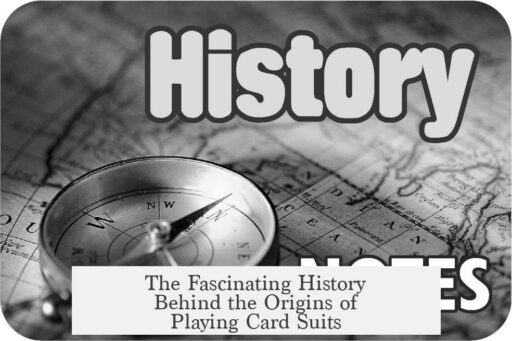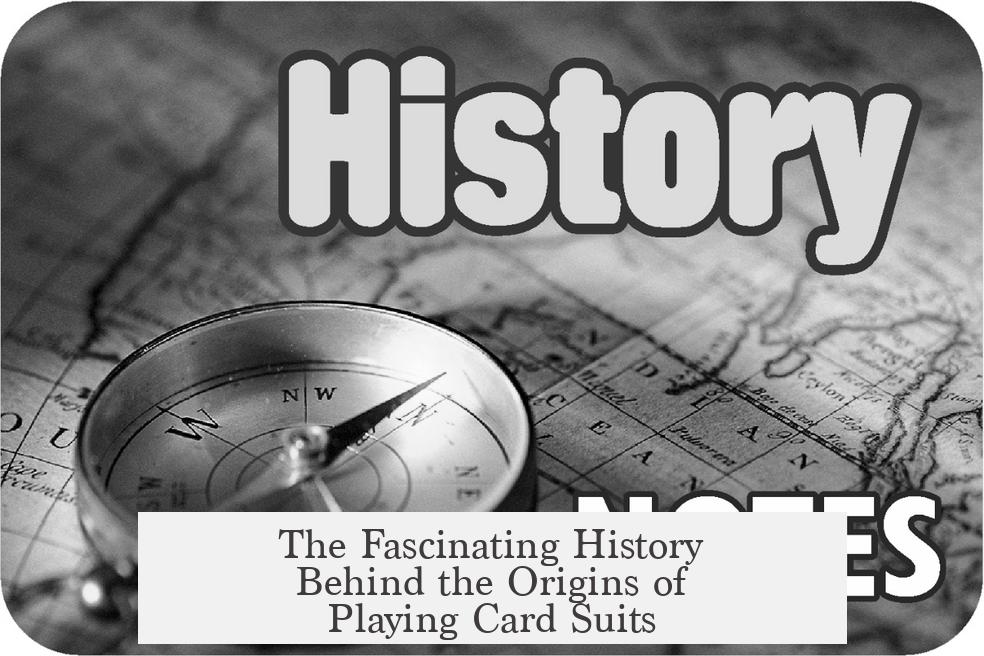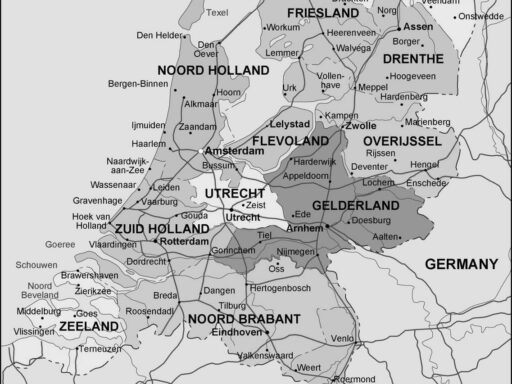The origins of playing card suits trace back to a complex history beginning in Asia and evolving through multiple cultures before forming the modern suits known today.
Playing cards are thought to have started in China. Early Chinese cards, known as money cards, had four suits. However, common tales linking the spread of cards to the Crusades, the Roma people, Marco Polo, or Persia lack solid evidence. Instead, the transmission occurred slowly over centuries as different cultures traded and traveled.
Playing cards appeared in Europe around 1371 CE. This timing comes from various historical documents mentioning cards after this period but not before. European cards likely derive from the 12th or 13th century Egyptian Mameluke cards. A preserved Mameluke deck was found in Istanbul during the 20th century, providing crucial evidence for this link.
The Mameluke deck contained 52 cards divided into four suits: Swords, Polo-Sticks, Cups, and Coins. Each suit had cards numbered 1 to 10 and three court cards—King, Viceroy, and Under-Deputy. These suits closely match the Latin suits used in Italy and Spain. The polo sticks were renamed batons in Europe because polo was unknown there.
Early European card decks were not standardized. Various regions created decks with suits like animals, birds, armor, or riding gear. For example, German decks often used Acorns, Leaves, Hearts, and Bells. The composition of the decks could change, with some cards removed or added, including a fifth suit in Tarot decks. Court cards also varied, showing combinations of King, Queen, Knight, and Valet.
The French suits—Spades, Hearts, Diamonds, and Clubs—first appeared around 1480. These suits are a simplified version of German suits. Their clean, abstract shapes were easier to produce through printing methods, such as woodblock stamping and stencils. The designs used only two colors, red and black, to help players quickly recognize the cards. This practical design made French suits popular and dominant in Europe.
Tarot decks represent a branch of card evolution from 15th-century Europe. Tarot decks usually have four suits similar to the Latin suits plus a fifth suit called trionfi. The oldest known Tarot deck, the Visconti-Sforza deck, used Latin suits. Tarot was primarily used for gameplay, not fortune-telling.
The link between Tarot cards and divination arose only in the 18th century. Antoine Court de Gébelin, a Protestant pastor, wrote an influential but questionable essay in 1781. He proposed conspiracy theories about Tarot’s origins and claimed the cards had mystical powers. Despite the lack of scholarly support, this essay popularized Tarot’s use in divination. Tarot readers favored decks with Latin suits due to the symbolism pointed out by Court de Gébelin, a preference that persists today.
| Key Aspects of Playing Card Suits Origins |
|---|
| Originated in China with money cards having four suits. |
| Introduced to Europe by the late 14th century, likely from Egyptian Mameluke decks. |
| Mameluke suits: Swords, Polo-Sticks, Cups, Coins → Influenced Latin suits. |
| Early European decks varied widely with regional suit designs. |
| French suits (Spades, Hearts, Diamonds, Clubs) invented circa 1480, simplified and easier to print. |
| Tarot decks used Latin suits plus a fifth suit and started as gaming cards. |
| Tarot’s divination use dates to 18th century, popularized by Antoine Court de Gébelin. |
- The four suits known today evolved gradually from diverse cultural traditions.
- Early card suits reflect historical activities like polo and everyday items.
- French suits’ simple designs aided mass production and popularity.
- Tarot cards stem from a 15th-century gaming tradition rather than mysticism.
- Modern mystic associations with Tarot are a recent development, not original.
The Fascinating Origins of Playing Card Suits

The origins of playing card suits stretch back centuries, weaving through different cultures and continents before landing at the familiar deck on your table today. The story? It’s a winding historical journey—not a flashy tale of knights or crusades, but a slow cultural exchange across the old world that reveals how four simple symbols became a global pastime.
Let’s unravel this intriguing timeline, tracing the **origins of playing card suits** from ancient China to modern decks, separating myth from reality, and revealing the quirky twists in between.
Did Playing Cards Really Arrive via the Crusades?
Contrary to popular belief, the timely and dramatic transmission of playing cards through the Crusades, Roma travelers, or Marco Polo’s adventures is mostly a myth. Scholars now think the spread was gradual. Over centuries, cards moved one realm to another along trade routes, carried by merchants and travelers rather than soldierly expeditions or wandering gypsies.
Cards are thought to originate in China, notably from “money cards,” which had four suits. But the details about how exactly they sailed westward remain murky. It’s less Indiana Jones, more Slow and Steady Wins the Race.
The First Europeans to Get Their Hands on Cards

Now, when do cards officially show up in Europe? Around 1371 CE, documents record their presence, marking their accepted arrival in everyday life. Delving deeper, the deck they resemble comes from the 12th or 13th-century Egyptian Mameluke cards, preserved mysteriously till their discovery in Istanbul in the 20th century.
The Mameluke deck sported four suits: Swords, Polo-Sticks, Cups, and Coins. These four elements are not just old-school random picks—they form what we call the Latin suits. Polo-sticks were later swapped to batons because, ironically, polo wasn’t a European pastime.
Mix and Match: Early European Decks Were Not Standardized
Imagine early card makers experimenting wildly. Suits weren’t fixed; decks featured creatures, armor, or bits of horse tack. A German pattern had Acorns, Leaves, Hearts, Bells. Some decks lacked cards; others added a fifth suit, echoing Tarot’s influence.
Back then, these decks were tailored for specific games rather than uniformity. This diversity reminds us how creative and playful early card culture was—like the indie music of gaming.
The French Revolution in Suit Design

Then comes the game-changer: the French suits. About 1480, the French created what we recognize today—Spades, Hearts, Diamonds, Clubs. Why? Because these shapes were simplifications of German suits and much easier to produce.
Stamped or hand-drawn cards with simple geometric forms sped up production. Plus, the bold red and black colors helped players identify suits at a glance. The design nailed both utility and aesthetics, making French suits popular worldwide.
The Tarot Connection and Its Mythical Twist
Turn your gaze to Tarot—a cousin in the family, not an ancestor. Originating in Italy (the Visconti-Sforza deck), Tarot decks use Latin suits plus a fifth, the trionfi. Tarot cards started primarily as gameplay tools, not mystical oracles.
Interestingly, Tarot’s link to divination began much later, in the 18th century, thanks to Antoine Court de Gébelin. His eccentric essay spun conspiracy theories about Tarot wealth, magic, and mystery, igniting a fortune-telling fad. Today’s diviners still favor Latin suits because of his influence.
Why Should You Care About These Origins?

Understanding the origins of playing card suits is more than trivia. It reveals the richness behind a common object—we use decks for fun, strategy, and sometimes superstition, but it’s a link to cultures across time. Prosperity symbols, sporting gear, and simple shapes all tell stories.
Next time you shuffle a deck, think about the Mameluke kings holding swords, the French artists carving out simple clubs, or the questionable theories twisting Tarot cards into mystical tools. They’re all part of your game.
Pro Tips for Card Enthusiasts
- Try playing with a deck of Latin suits! It’s a fun glimpse into history and offers a fresh gameplay challenge.
- If you collect cards, look for rare patterns like German suits or vintage Tarot decks for a unique twist in your collection.
- When buying Tarot decks, remember their original purpose was gameplay—not psychic predictions.
Wrapping It Up
The journey of card suits from Chinese money cards to modern French suits is long and winding. It breaks down the myth of sudden transfer and showcases a fascinating cultural evolution. Each suit has a story linked to a time and place, mixing art, utility, and human creativity.
Who knew that something as ordinary as card suits had such a rich past? The next deal isn’t just about the game—it’s a small piece of history.
Where did the earliest playing card suits originate?
Playing cards likely began in China with a type called money cards, featuring four suits. The spread to other regions was gradual, involving trade and travel over centuries rather than quick transfers like during the Crusades.
What are the Mameluke card suits and how did they influence Europe?
The Mameluke deck had four suits: Swords, Polo-Sticks, Cups, and Coins. These suits closely match the Latin suits found in Italy and Spain. Polo-Sticks became batons in Europe since polo was not familiar there.
Why did French suits replace older European card suits?
French suits appeared around 1480 as a simplified version of German suits. Their simple shapes were easier to produce using printing blocks or stencils, improving card recognition and manufacturing efficiency.
Did Tarot cards influence the origin of playing card suits?
Tarot cards use Latin suits and emerged in the fifteenth century after the Mameluke and early European decks. They added a fifth suit and extra court cards but were mainly for gameplay, not divination originally.
When did Tarot cards start being used for divination?
Tarot cards gained divination status in the 18th century due to Antoine Court de Gébelin’s 1781 essay. His ideas linked Tarot symbolism to mysticism, influencing later diviners to prefer Latin-suited Tarot decks.




